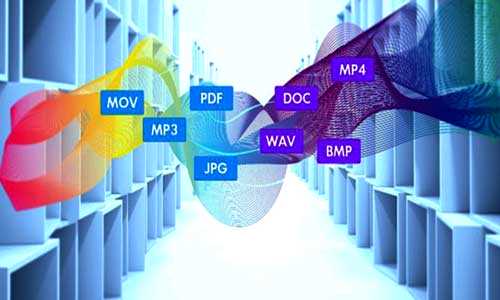Have you ever wondered why different videos come with different file formats? Why can’t we just have one file format to save us the stress of using multiple media players to play videos depending on the file format they support. It is always frustrating to download a video that is not supported by the media player on your device.
For example, I recently downloaded an mp4 format video which was not supported on the windows media player on my laptop; I was forced to download the VLC media player to access the content of the video.
Why do videos come in different file formats
A multimedia file in a digital format is made up of two parts- the codec and the container. The codec is used to compress and decompress a video file; this is done because there are times where video files may be too large and may cause difficulty when trying to download or play the file. A container is simply a collection of files that stores information about the digital file, it is the container type that dictates what kinds of data can be held in the file and how that data is arranged within the file. For example, a container format might have room for one subtitle track, one video track, one audio track. This means there is a collection of text, audio and video data in a single file. Most video formats are named after their container. It is the codec and container that determine the file format of any video.
MP4 (Moving Pictures Expert Group 4): The Mp4 file format, also commonly known as MPEG-4, is probably the most widely used video format in recent times. It is a digital multimedia container format mostly used to store audio, video, and text. It was introduced in 1998; the Mp4 video format uses separate compressions for audio and video tracks. Videos are compressed with H.264 or MPEG-4 compression technique while audios are compressed with AAC compression. Mp4 file are relatively small in size and maintain it’s high quality even after compression.
The mp4 format is very useful because it can store data types other than video and audio, such as object descriptors and scene descriptors. MP4 files can be run on virtually all the major media players and sound card drivers. Imaging with MP4 video file format is sharp, clear and precise.
MKV: The MKV file format is also known as Matroska file format, it originated from Russia in 2002. The MKV file format is not just audio or video compression format; it is also a multimedia container that can incorporate audio, video, and subtitle into a single file. MKV can incorporate multiple contents even if they have different encoding. For instance, you could have a file that contains H-264 video and an Mp3 or AAC audio file incorporated in a single file in MKV. Just like the MP4 file format, the MKV container also supports almost any audio and video format.
AVI (Audio Video Interleave): AVI is also a multimedia container format introduced by Microsoft in 1992. AVI can only contain video and audio files, but it can actually hold multiple tracks of each file. Unlike the Mp4 or MKV format, the AVI has some compression limitations that result in larger than average files.
Media players and the file format they support
Vlc (VideoLAN client)– it is arguably the most popular media player around.
Vlc supports 3GP, ASF, AVI, DVR-MS, FLV, MKV(Matroska), MIDI, QuickTime File Format, MP4, Ogg, OGM, WAV, MPEG-2 (ES, PS, TS, PVA, MP3 ), AIFF, Raw audio, Raw DV, MXF, VOB, RM, Blu-ray, DVD-Video, VCD, SVCD, CD-Audio, DVB, HEIF, AVIF.
Windows media player: It is a popular media player designed by Microsoft for its Microsoft operating system.
It supports a lot of file format including WMV, MOV, MPEG, WAV, ASF, MIDI, and AIFF, Mp4, MPEG-2 (ES, PS, TS, PVA), MIDI, AU (UNIX), MP3, DVD videos files.
KMPlayer– The KM Player is not as well known as the VLC Player. Also, it is not available for as many operating systems and devices. It supports 3GP, ASF, AVI, FLV, MKV, MOV, MP4, MPG, MPEG, OGM, RM, TS, VOB, WMV, AAC, CDA, FLAC, M4A, MID, MKA, MP2, MP3, OGG, RA, WAV, WMA.

